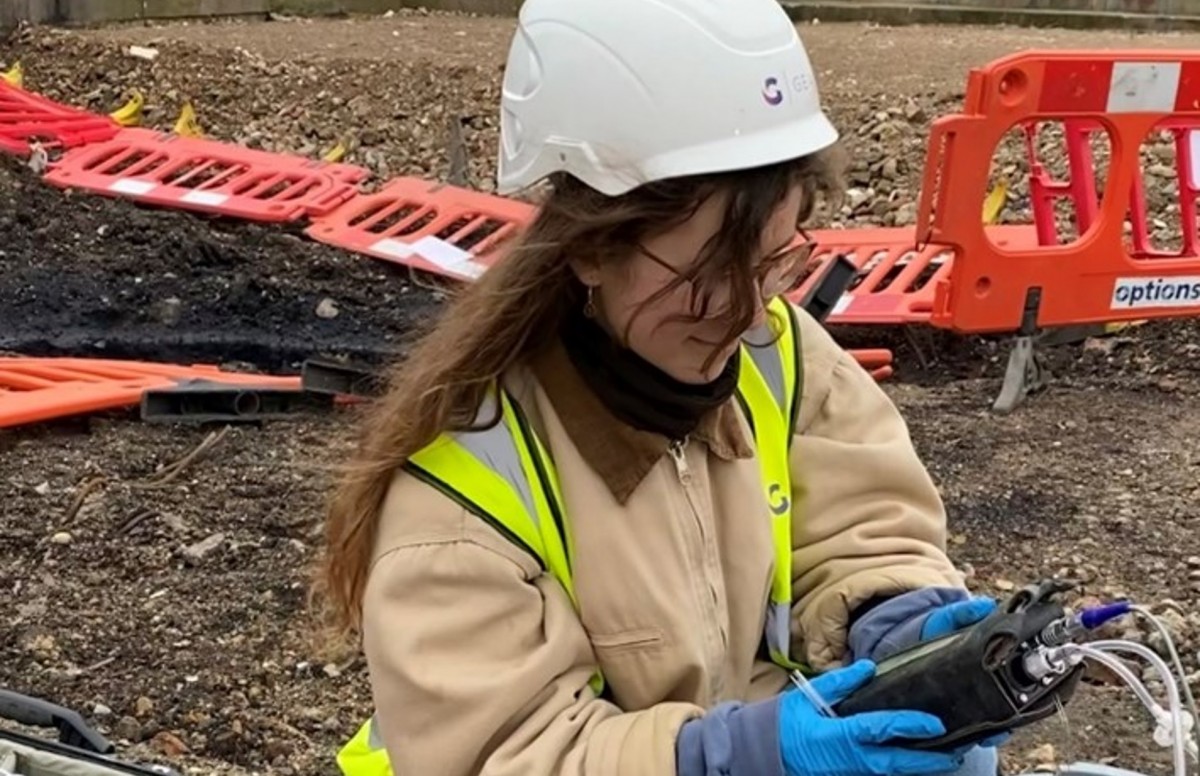The Greatest Guide To Geotheta
The Greatest Guide To Geotheta
Blog Article
The Facts About Geotheta Uncovered
Table of ContentsGeotheta Can Be Fun For AnyoneNot known Incorrect Statements About Geotheta The smart Trick of Geotheta That Nobody is DiscussingThe Greatest Guide To GeothetaSome Known Details About Geotheta

They conduct site investigations, accumulate examples, perform research laboratory examinations, and evaluate data to assess the viability of the ground for construction jobs - Tailings Engineer. Based on their findings, geotechnical engineers supply referrals for structure design, incline stability, preserving structures, and reduction of geotechnical dangers. They team up with various other professionals, such as architects, architectural designers, and building and construction groups, to ensure that geotechnical factors to consider are integrated into the overall project layout and implementation
By examining the actions and homes of soil and rock, they can recognize potential geotechnical risks such as landslides, dirt negotiation, or slope instability. Their competence helps protect against failings or crashes that might endanger lives and home. Below are some thorough responsibilities and obligations of a geotechnical designer: Site Examination: Geotechnical engineers conduct site investigations to gather data on subsurface conditions.
They interpret the information to recognize the buildings and behavior of the dirt and rock, including their toughness, permeability, compaction characteristics, and groundwater conditions. Geotechnical Analysis and Design: Geotechnical designers assess the data collected throughout site investigations to analyze the stability and suitability of the website for building and construction jobs. They execute geotechnical computations and modeling to review elements such as birthing capability, settlement, slope security, lateral planet pressures, and groundwater flow.
Geotheta Can Be Fun For Anyone
Structure Layout: Geotechnical designers play a critical duty in making structures that can securely sustain the designated structure. They assess the soil problems and tons requirements to establish the proper foundation kind, such as shallow foundations (e.g., grounds), deep foundations (e.g (https://www.goodreads.com/user/show/180594840-ian-hammond)., stacks), or specialized methods like soil renovation. They consider variables such as negotiation limits, birthing capability, and soil-structure communication to develop optimal structure styles
They review construction strategies, display website tasks, and conduct field evaluations to verify that the style suggestions are followed. If unanticipated geotechnical concerns develop, they examine the circumstance and offer suggestions for remediation or changes to the layout. Danger Evaluation and Reduction: Geotechnical designers assess geotechnical hazards and threats related to the job site, such as landslides, liquefaction, or dirt erosion.

Cooperation and Communication: Geotechnical designers function carefully with various other specialists involved in a task, such as architects, structural designers, and building and construction groups. Reliable interaction and cooperation are important to incorporate geotechnical considerations into the overall job layout and building procedure. Geotechnical designers give technical competence, answer inquiries, and ensure that geotechnical demands are met.
Unknown Facts About Geotheta
Right here are some kinds of geotechnical engineers: Foundation Engineer: Foundation engineers concentrate on creating and examining structures for frameworks. They evaluate the soil conditions, tons needs, and website qualities to identify the most suitable structure type and style, such as superficial structures, deep structures, or specialized techniques like pile foundations.
They assess the elements influencing slope security, such as dirt buildings, groundwater problems, and slope geometry, and establish methods to stop incline failings and mitigate risks. Earthquake Engineer: Earthquake engineers specialize in evaluating and developing frameworks to stand up to seismic pressures. They analyze the seismic risk of a site, evaluate dirt liquefaction capacity, and establish seismic style criteria to guarantee the security and resilience of frameworks during quakes.
They do field testing, accumulate examples, and evaluate the collected information to define the dirt buildings, geologic developments, and groundwater conditions at a website. Geotechnical Instrumentation Designer: Geotechnical instrumentation designers concentrate on monitoring and gauging the actions of soil, rock, and structures. They install and maintain instrumentation systems that check aspects such as dirt negotiation, groundwater levels, incline motions, and architectural displacements to analyze performance and provide early warnings of potential problems.
The Best Strategy To Use For Geotheta
They perform tests such as triaxial examinations, debt consolidation examinations, direct Extra resources shear tests, and leaks in the structure examinations to collect information for geotechnical analysis and style. Geosynthetics Engineer: Geosynthetics engineers concentrate on the style and application of geosynthetic materials, such as geotextiles, geogrids, and geomembranes. They use these products to boost soil security, enhance slopes, give drainage options, and control disintegration.
They tend to be investigatory people, which indicates they're intellectual, introspective, and analytical. They wonder, methodical, rational, logical, and sensible. Several of them are also social, indicating they're kind, charitable, participating, client, caring, valuable, understanding, sensible, and pleasant. Does this noise like you? Take our cost-free career examination to learn if geotechnical engineer is just one of your top occupation suits.
In the workplace setting, geotechnical engineers use specialized software application tools to execute estimations, develop designs, and analyze information. They prepare reports, testimonial job requirements, communicate with customers and group participants, and coordinate job tasks. The office setting offers a favorable setting for research, analysis, and cooperation with other specialists associated with the job.
Not known Incorrect Statements About Geotheta
They regularly see task sites to perform website examinations, analyze geotechnical conditions, and collect information for analysis. These check outs include taking a trip to different places, occasionally in remote or difficult surfaces. Geotechnical designers might carry out dirt sampling, conduct examinations, and screen construction activities to make certain that the geotechnical aspects of the project are being executed appropriately.
Geotechnical engineers also function in specialized geotechnical research laboratories. In these centers, they carry out experiments, execute tests on dirt and rock examples, and examine the design properties of the materials. Geotechnical lab engineers function thoroughly in these settings, handling testing devices, running tools, and recording data. They work together with various other laboratory staff to make sure exact and dependable testing outcomes.
Report this page